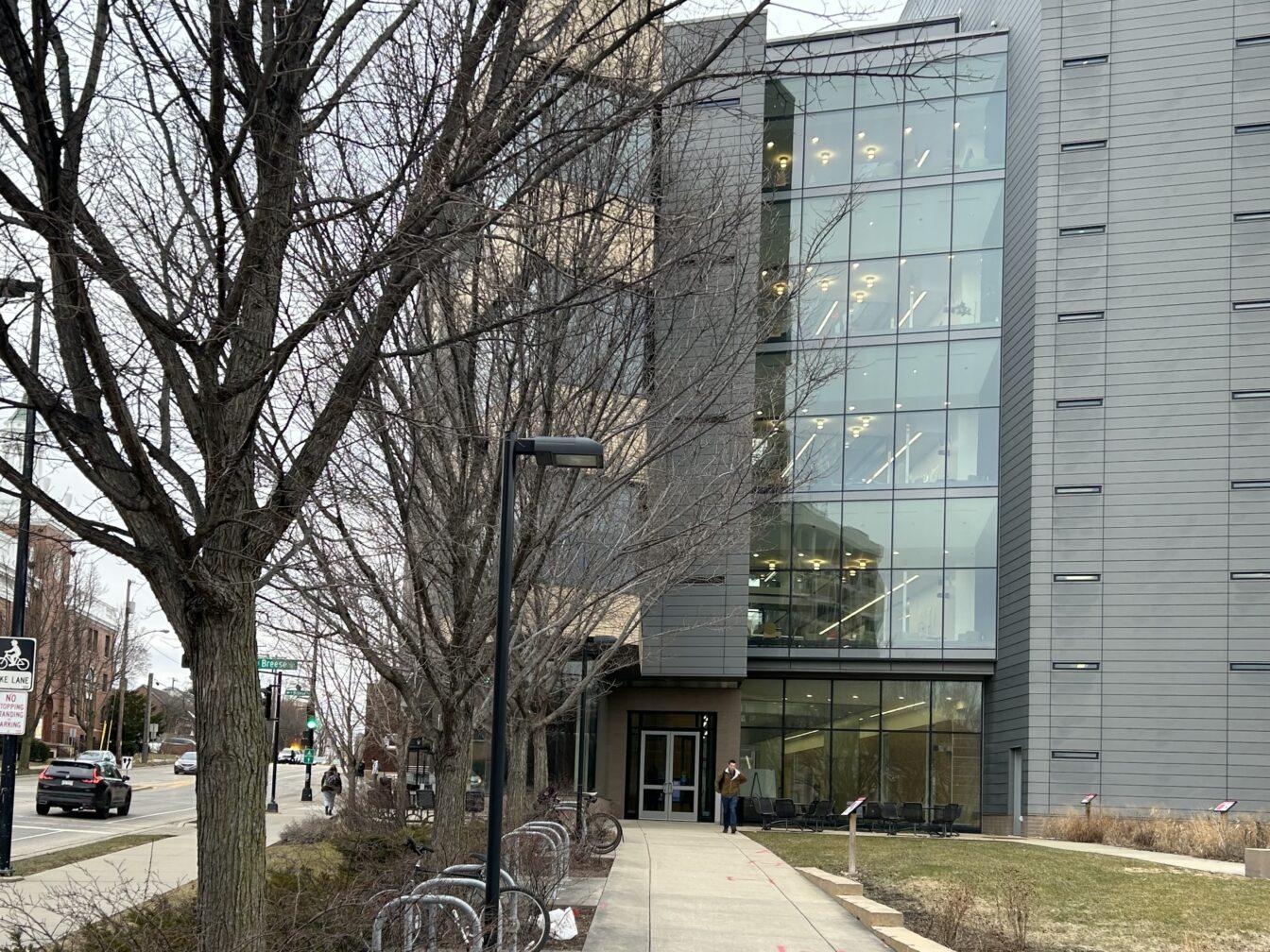This coming weekend, Madison will host an event that has the potential to change the world. No, I’m not talking about the Wisconsin Original Cheese Festival or the men’s hockey game against Minnesota. I’m referencing the Future Cities 2009 Conference. Tagged as ?ocal democracy in action for a greener, more peaceful world, this event seeks to stimulate efforts to get citizens involved in their municipalities on issues ranging from greener transportation to the global elimination of nuclear weapons.
While there are certainly programs and speakers one would expect from such an event deciding to come to Madison such as a program called ?uilding Local Coalitions for Change being put on by Madison’s very own Brenda Konkel there is a peculiar focus on what mayors and other local government leaders can do to stop all things nuclear. While I’m not really sure how Mayor Dave learning about the Nuclear Non-Proliferation Treaty at a presentation titled global law and nuclear weapons: Future paths is really going to help him perform any of his mayoral duties, at least there are rational reasons why a world without nuclear weapons would be better than the one we currently live in.
The same, unfortunately, cannot be said for the other portion of their anti-nuclear efforts, namely the bid to end the use of nuclear energy sources. While there might be some potentially legitimate reasons to oppose the building of new nuclear plants, the anti-nuclear advocates that are descending on Madison appear unable to find them if they were the size of a couple decillion barns. (For all of you non-nuclear scientists, a barn is 10^-24 cm^2. So a decillion,10^33, barns would be 10^7 m^2 … OK, never mind.)
Take, for example, Nukewatch co-director John LaForge. In the summer 2008 edition of Nukewatch Quarterly, while discussing Three Mile Island, he stated, ?ver 10 million curies of radioactive noble gases were vented from the ?ontainment building.
The units he chooses to use to discuss the amount of radiation he says were released are incredibly telling. Given the number of people in America who know the difference between a Sievert and a Gray or a rad and a rem, it’s not hard to imagine how easily radiation units can be manipulated to give the desired impression of the effects of radiation.
Other than being dead scientists, curies are a measure of what is essentially a reaction rate. They measure disintegrations per second. They don’t measure the impact on humans or the environment, but rather the rate at which nuclei undergo various kinds of nuclear emissions.
There is a reason there are no regulations on the number of curies a person can safely be exposed to. The wide-ranging effects of different kinds of radiation mean of rem which measure the actual biological impact that being exposed to radiation can cause. Now the odds that the average person would know the difference are close to zero, but at least with rem it’s possible to go and look up how many rem one is exposed to by an X-ray or how many the Nuclear Regulatory Commission regulations say the general population can be safely exposed to in a year.
Other evidence of the anti-nuclear advocates fundamental misunderstanding of the impact of all things nuclear and their attempts at scare tactics to convince others to agree with them can be found in the description of a program on the effects of nuclear radiation. The program tells us that federal agencies warn every external or internal radiation exposure, no matter how small, increases ones risk of cancer. It’s interesting to note these same federal agencies reportedly can’t be trusted when they speak about the impacts of Three Mile Island and are accused by the anti-nuclear side of “official cover-ups,” oversight and incompetence. However, now that what they say can be misinterpreted to scare people about the effects of radiation, their word is gospel.
The information they are misrepresenting is not that federal agencies such as the NRC and EPA warn us any exposure to radiation increases the risk of cancer, but rather the model they use to decide how much radiation workers or the public can be exposed to assumes a worst-case scenario where radiation exposure is accumulated and linear. In reality, no one can really say definitively whether or not that X-ray of the ribs broken at age 13 contributed to lung cancer at 62. Everyone is constantly exposed to natural background radiation and small exposures just don’t stand out enough to be conclusively studied. The only risk is that the assumption is wrong and our bodies are naturally able to recover from small doses of radiation.
While I don’t have the space to go through and correct every misrepresentation of the facts designed to scare the uninformed public made by the anti-nuclear crowd, before you decide to believe their propaganda, know there are many people down in the Engineering Research Building who would be happy to set the record straight.
And before someone starts the ad hominem attacks by claiming I’m bought and paid for by the nuclear industry, as those on the anti-nuclear side seem so fond of doing, you should know that I have received scholarship money from the NRC, and if things go well, someone from the nuclear industry will be paying me thousands more by this time next year.
Patrick McEwen ([email protected]) is a junior majoring in nuclear engineering.













